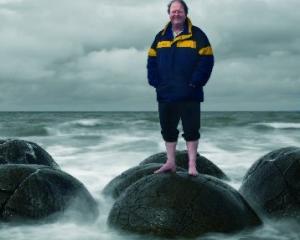
The report on the Government's planned changes to the emissions trading scheme by the Sustainability Council's executive director Simon Terry and economist Geoff Bertram says farmers will be subsidised to the tune of $1.1 billion by the end of 2012, while large emitters get nearly $500 million.
Kyoto requires New Zealand to take financial responsibility for any increase in its emissions over 1990 levels during the five years from 2008-12 inclusive.
Current estimates are that target will be exceeded by 76 million tonnes, which would cost $2.3 billion (at the carbon price of $30 a tonne, the report assumes).
The cost gets much bigger beyond 2012 if the national target gets tougher and emissions continue to climb.
Among those emitters who will bear a cost under the ETS, households will pay just over half, Mr Terry and Dr Bertram said.
Combined with small and medium-sized businesses and transport operators, they will pay 90% of the charges the ETS imposes, although they would be only responsible for 30% of total emissions.
Changes to the ETS now being considered by a parliamentary select committee lighten the burden on "trade-exposed" sectors, including farming, which account for about two-thirds of the country's emissions, in order to protect their competitiveness when most of the world has yet to impose a price on carbon emissions.
Climate Change Minister Nick Smith said the Government was providing allocations of free emissions units more generously for those emitters not because they were large, but because they were trade-exposed.
"It has nothing to do with favouring big over small," he said.
"The Government makes no apologies for being pretty pragmatic about climate change and the ETS.
We want to get the economy moving again and particularly to get growth in the trade sector.
So we are making changes to the ETS to minimise the extent to which it impacts on those trade-exposed industries."
It was misleading to talk about subsidies to farmers on the basis they were not paying for their emissions during Kyoto's first commitment period (2008-12), Dr Smith said.
"No country in the world is imposing a cost on their agriculture industry in the first commitment period. We are likely to to be the first in 2015."
Furthermore, agricultural emissions had risen the least since 1990, he said; 12% compared with 22% across all sectors.
The taxpayer would not be picking up a big bill in the next few years, Dr Smith said.
"In the latest reports I have received, New Zealand is about $300 millon in credit."
That is because credits generated by forests planted since 1990 would more than cover the overshoot in gross emissions.
But Mr Terry and Dr Bertram pointed out that if those forest sink credits were used to square accounts with other Kyoto countries in the short to medium term, they would not be available to cover the associated liabilities when the trees were harvested in the 2020s and the carbon locked up in them is deemed to be released to the atmosphere.




